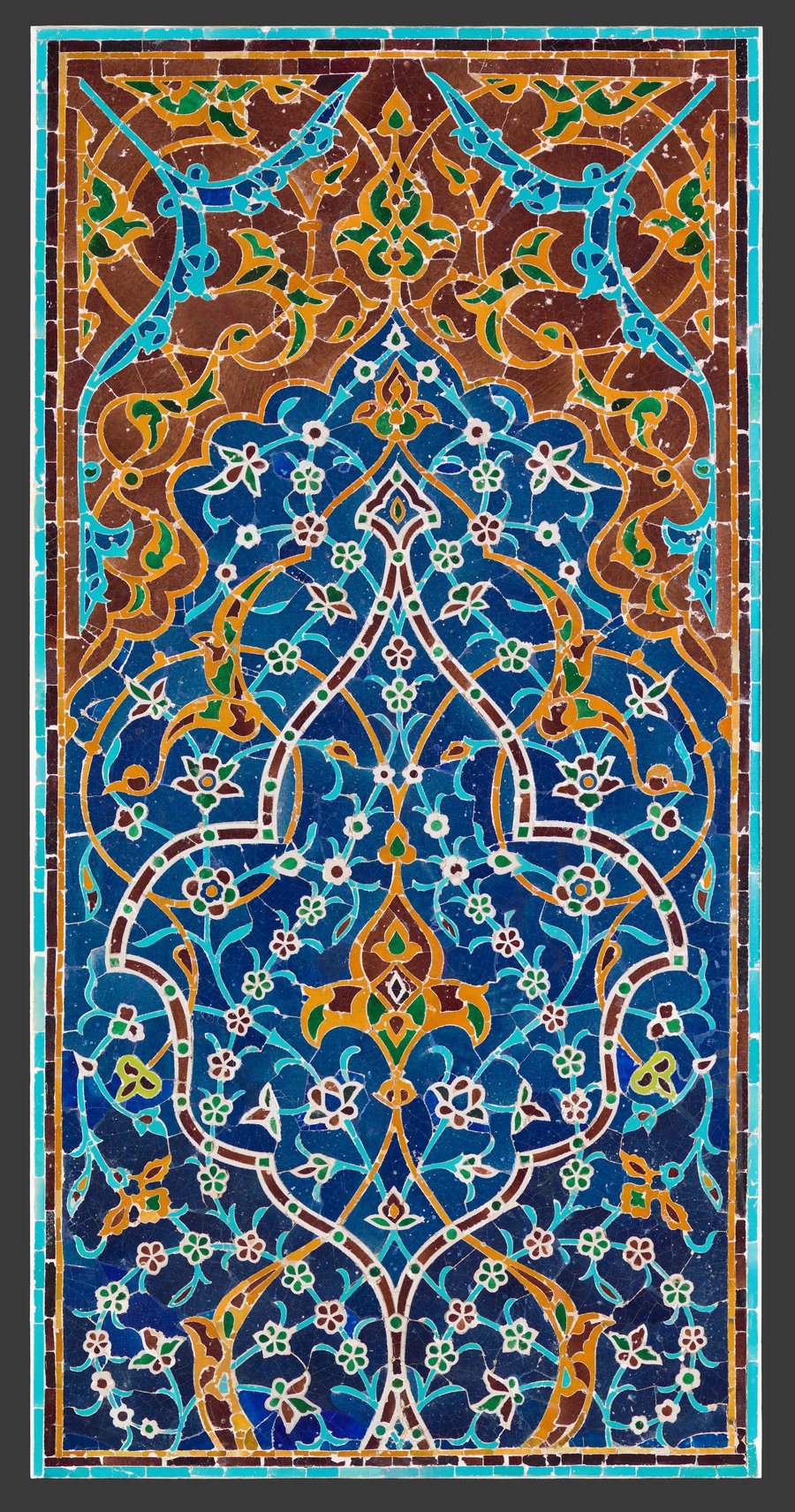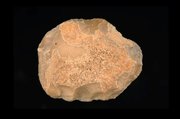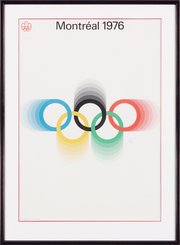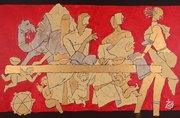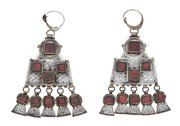
Mosaic Tile Panel
Museum of Islamic Art
- Title:
- Mosaic Tile Panel
- Production place:
- Isfahan
- Date:
- 1480 - 1481
- Period:
- Timurid
- Title:
- Mosaic Tile Panel
- Production place:
- Isfahan
- Date:
- 1480 - 1481
- Period:
- Timurid
- Material:
- Fritware, Glaze
- Technique:
- Mosaic, Cutting, Glazing, Assembling
- Dimensions:
- 162 × 81 × 6
The Timurid era ushered in a period of great technical achievement in terms of tile revetement. Massive monuments, sponsored by the royal family as well as their provincial governors and prosperous local patrons, were routinely covered in expanses of intricately laid tile mosaic. The tomb of Zayn al-Mulk in Isfahan was one of the many mid-9th ventury AH/15th century CE monuments decorated in this fashion. Typical of the period is this tile panel from the tomb with its pattern of scrolling vines, flowering buds and palmettes set amidst scalloped cartouches and arched motifs in shades of blue, yellow and purply brown. Inscriptional panels from the building inform us that it was built by one Ja‘far ibn ‘Imad ibn ‘Ali al-Adhami al-Gulbari al-Hasani for his father in 885 AH/1480-81 CE. The complex may have once included a madrasa and mosque; those now adjacent to the tomb date from a later period, possibly replacing structures built at the same time as the tomb.
The tomb was dismantled in 1908 CE, and panels from its revetment were originally advertised for sale in New York 1910 CE. There are several now in museum collections including the Royal Ontario Museum, the Brooklyn Museum of Art and the Sackler Gallery, Washington D.C., which has a panel identical to the present one.
